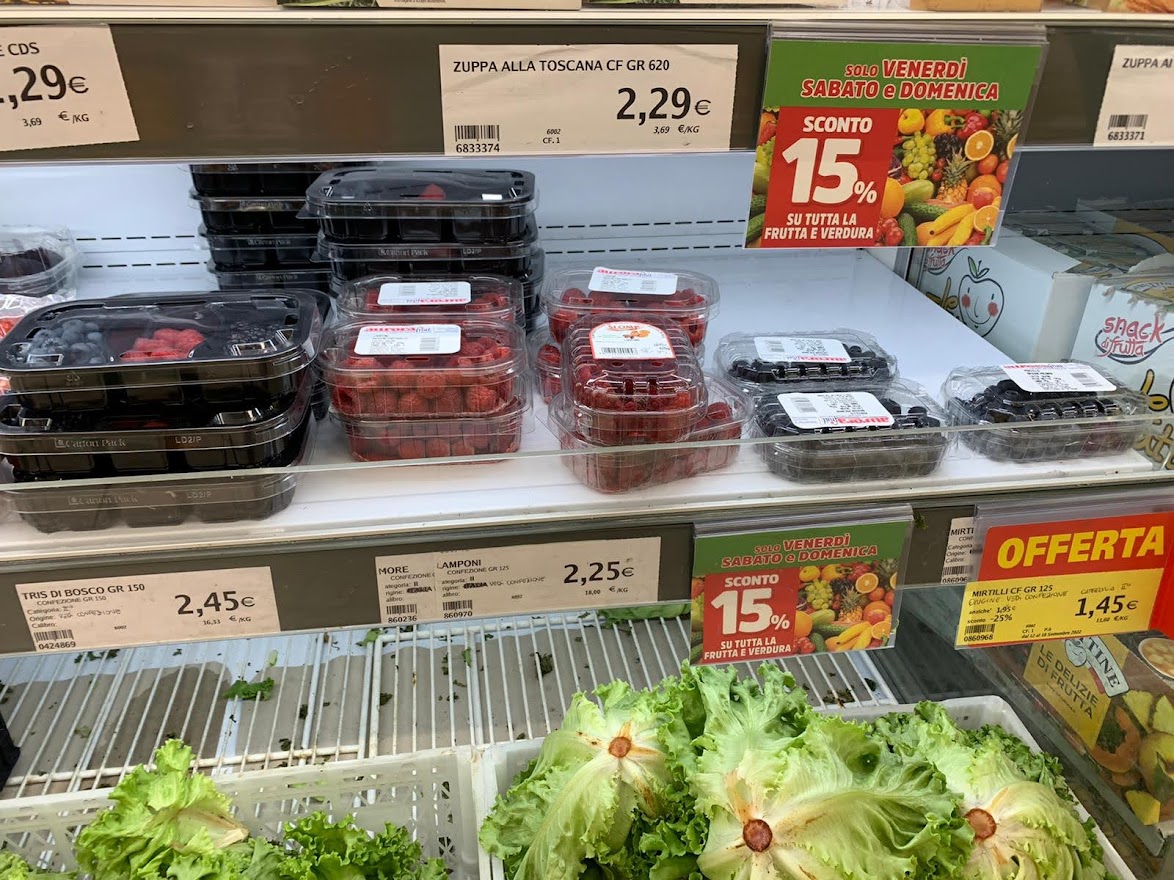For more than 10 years blueberry has been a growing crop for Italian producers. While the Italian market is growing slowly, sales are mainly made abroad. In addition to the traditional destinations of Italian fruit and vegetable exports (Germany, Switzerland, Austria), the main market is the United Kingdom, especially during the main Italian production window which runs from mid-June to the end of July.
PRODUCTION
In Italy, the berries sector (which includes blueberries, raspberries, blackberries, currants and other minor berries ) covers an area of 720 hectares.
The production of blueberries is concentrated in the areas of Trentino, Piedmont (Cuneo), Lombardy (Valtellina) and Veneto (Verona). Marginal quantities are produced in Tuscany, Calabria and Sicily. New productions are also starting in Emilia-Romagna and Lazio.
Production is mainly managed by small producers, often family-owned. This is the structure of the sector in Piedmont (900 companies with an average of 0.4 hectares according to the Creso research consortium in Cuneo) and in Trentino. But new, more structured companies are investing in blueberry areas of more than 5-10 hectares in Veneto and the province of Cuneo. The production of blueberries is also increasing in Valtellina (50 hectares).
The Italian production of blueberries can be estimated at about 3000 tonnes in total, of which about one third in Trentino Alto Adige and 20-25% in Piedmont. The main variety produced in Italy is Duke, but there are also later varieties such as Brigitta and Elliott. New varieties are also emerging, in particular Draper in Piedmont.
EXPORT
"In Piedmont, exports cover about 75% of production; the UK market receives the largest share in terms of quantity and the best selection in terms of quality," says Thomas Drahorad, managing director of NCX Drahorad, which has been supplying Italian blueberries to the UK for seven years. "The strengths of Italian production are very efficient management of order and processing times (less than 72 hours between order and delivery), accurate processing and pre-cooling to preserve shelf life andbloom, high guarantees in terms of healthiness and food safety."
IMPORT
Consumption in the Italian market is highly variable depending on price. "The blueberry imported by sea from Chile is helping us to increase consumption in Italy," says Stefano Gatto of Garden Frutta, "the best-selling format is the 125g basket and consumption increases considerably when the price is € 0.98 per basket in the 4-5 weeks between January and February and then again in May-June with the blueberry from Morocco and Spain. Our company markets in Italy and abroad a total of 3800 tons of berries, including 1500 tons of blueberry, 1300 tons of raspberry, 800 tons of blackberries, 150 tons of currants. For blueberry the company's production is 200 tons, the rest is imported or contributed from other parts of Italy."
THE WILD BLUEBERRY
In Italy, a country with a long tradition of production and which has the largest number of fruit and vegetable PGIs in Europe, there is also a production and consumption niche for blueberry (wild blueberries), which in August is produced spontaneously in the high mountains (over 1500m above sea level), mainly in the Fanano (Modena) and Abetone (Pistoia) areas. It is a small-sized product (6-8mm) but with a very intense flavour and dark red flesh.









